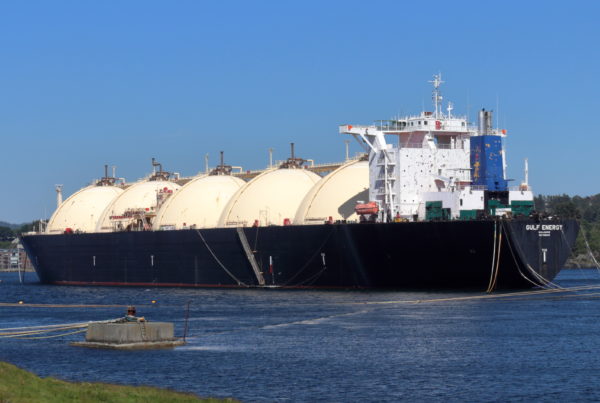The 580-mile Matterhorn Express Pipeline is set to begin operations within the next month, moving natural gas from a West Texas terminal to Katy, outside of Houston.
With the need for reliable energy increasing at the statewide and global level, the construction of Matterhorn and a handful of other pipelines in the area are being closely monitored by analysts worldwide.
Energy analyst Matt Smith from Kpler joined Texas Standard to discuss what he expects from the pipeline’s construction. Listen to the interview above or read the transcript below.
This transcript has been edited lightly for clarity:
Texas Standard: We’ve been talking a lot about all that bottled-up liquified natural gas in the Permian. Now it looks like there may be a way out. Tell us more about this pipeline – what start up means, particularly for pricing?
Matt Smith: Yeah, sure. So, you have this regional price point, Waha, which is based in the Permian Basin, and it has been negative for about half the days this year. The addition of this pipeline essentially starts to alleviate that bottleneck, which means more production can leave the region.
Now, what this will likely do is spur on more natural gas production in the Permian – potentially oil production, too, because oil has also been under the effects of this excess natural gas in the region, because there’s a limit to how much natural gas can be flared.
So, we should definitely see more natural gas production, potentially more oil, too.
Waha. Well, it sounds like a lot of “wahoos!” for the energy market. Tell us, what does this actually add up to when you’re talking about prices? I guess there’ll be more drilling activity, more processing. The LNG markets are going to be affected by this, I would presume.
Yeah, there’s a lot of pent-up supply there that will be alleviated and be able to come to market, and so we should see higher exports coming through.
One thing to bear in mind as well, that this isn’t the only pipeline that is underway in terms of getting gas out of there. There’s three additional ones coming through.
So if we think about the Matterhorn Pipeline, it’s got capacity of two and a half billion cubic feet (Bcf) a day. U.S. total production is about 100 Bcf a day, so it’s about 2.5%. But then these other three additional pipelines are going to be able to get well over seven Bcf a day further out of the Permian there.
So a lot of emphasis on the Texas region there in terms of production increases.
So I presume we’re talking about a lot more LNG exports. Isn’t the U.S. already the global leader when it comes to LNG exports?
Yeah, exactly. High production should result in higher LNG exports.
In terms of the global market, the U.S., Qatar and Australia account for 60% of total LNG exports, 20% each. But the U.S. edged past both of them last year and should continue to hold that number one spot as we see export capacity and pipeline capacity is being added.
And I presume the number one customer is, what, Europe?
Yes. So it was Asia, but then we had the Russia-Ukraine conflict. And so last year, two thirds of U.S. energy exports went to Europe.
This year, it’s about half of their LNG exports because Europe is actually now full to the brim, basically, in terms of their natural gas. In their storage, they’re well supplied ahead of winter. So, because of the worry about not getting as much from Russia, they’re trying to kind of fill their boots and make sure they’ve got enough.
Well, what does that translate to when we’re talking prices here? How do you see all of this adding up?
Well, there shouldn’t be too much of a crazy price increase.
With the production, the price in Permian – the Waha – there is negative. And so we are going to see a gradual increase, but nothing too crazy, because it’s just really relieving this bottleneck more than anything else.
I would think that prices would actually go down if production is going up. I mean, supply increases, you expect for there to be less demand perhaps.
You’ve got two sources of demand, right? You’ve got domestic demand. We know, particularly in Texas, demand is going to continue to increase for power generation. But you also have that export demand for LNG, too.
And so there will be that pull for this gas going to Texas, to Katy, to the Gulf Coast, but into the global market, as well.
Let’s talk about that domestic side of it, because natural gas is already the leading source in the Texas power generation mix. What does this mean for that?
So, it’s about a half of the Texas power generation. Wind and solar account for about 30%. Coal is 13-ish and nuclear, 7%.
So going forward, demand continues to grow in Texas. There’s a lot of solar capacity being added, but to meet this higher demand, you’re going to need natural gas to continue to be that base load fuel – the most reliable one, whether the sun may not be shining or the wind isn’t blowing.















